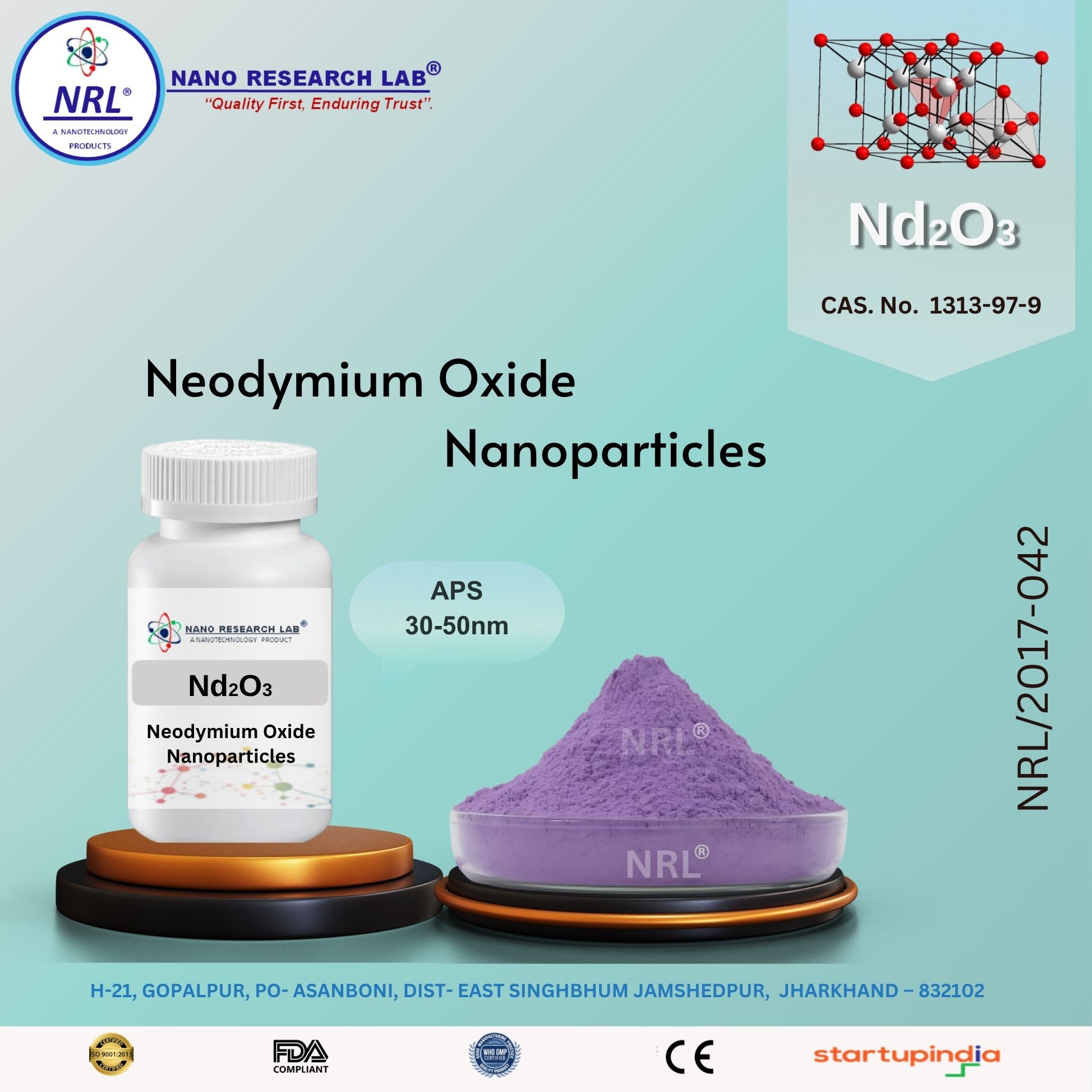
Neodynium Oxide Nanoparticles/Nanopowder (Nd2O3, 30-50nm, Purity 99.5%)
₹4490.00
Neodymium Oxide Nanoparticles / Nanopowder (Nd₂O₃, 30–50 nm, Purity 99.5%)
⚙️ Technical Specifications
Property | Specification |
|---|---|
Product Name | Neodymium Oxide Nanoparticles / Nanopowder |
Chemical Formula | Nd₂O₃ |
Purity | ≥ 99.5% |
Particle Size | 30–50 nm |
Appearance | Light pink to lavender fine powder |
Crystal Structure | Hexagonal / Cubic (depending on preparation) |
Density | 7.24 g/cm³ |
Melting Point | ~2345°C |
Solubility | Insoluble in water, soluble in acids |
Morphology | Spherical / polycrystalline nanoparticles |
CAS Number | 12037-29-5 |
🌟 Key Features
High purity (≥99.5%) with uniform nanoparticle size (30–50 nm)
Excellent magnetic and optical properties
High thermal stability and chemical resistance
Biocompatible for research and specialized applications
Easy to disperse in solvents, polymers, and ceramic matrices
Suitable for magnets, lasers, ceramics, and electronics
🔬 Applications (in Detail)
1. Permanent Magnets
Nd₂O₃ nanoparticles are key in NdFeB magnets, which are strong rare-earth permanent magnets.
Used in electric motors, wind turbines, and magnetic sensors.
2. Optics & Lasers
Used in solid-state lasers and optical amplifiers due to strong neodymium emission properties.
Incorporated into glasses and ceramics for infrared lasers, laser rods, and optical devices.
3. Ceramics & Glass
Acts as a dopant in ceramic and glass materials to improve color, refractive index, and thermal stability.
Used in specialty glasses, such as violet or pink-tinted glasses for optical filters.
4. Electronics
Applied in semiconductors, capacitors, and electronic devices for magnetic or optical functionality.
Enhances performance in high-frequency and miniaturized devices.
5. Catalysis
Serves as a catalyst in chemical synthesis, including oxidation reactions and organic transformations.
Useful in green chemistry and energy applications.
6. Research & Advanced Materials
Widely used in nanotechnology research, photonic devices, and rare-earth material studies.
Incorporated into composites, coatings, and high-performance materials for enhanced functionality.
